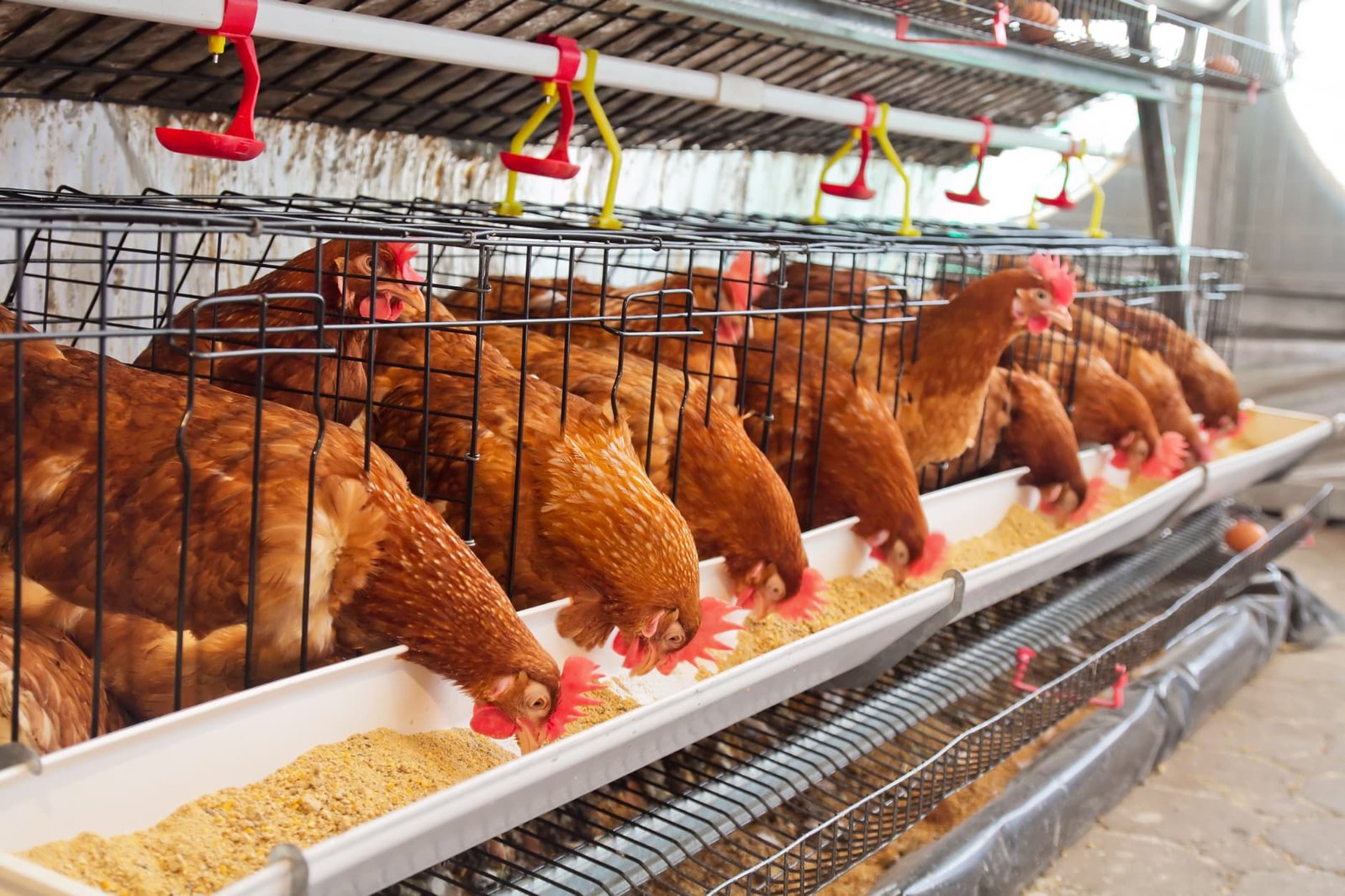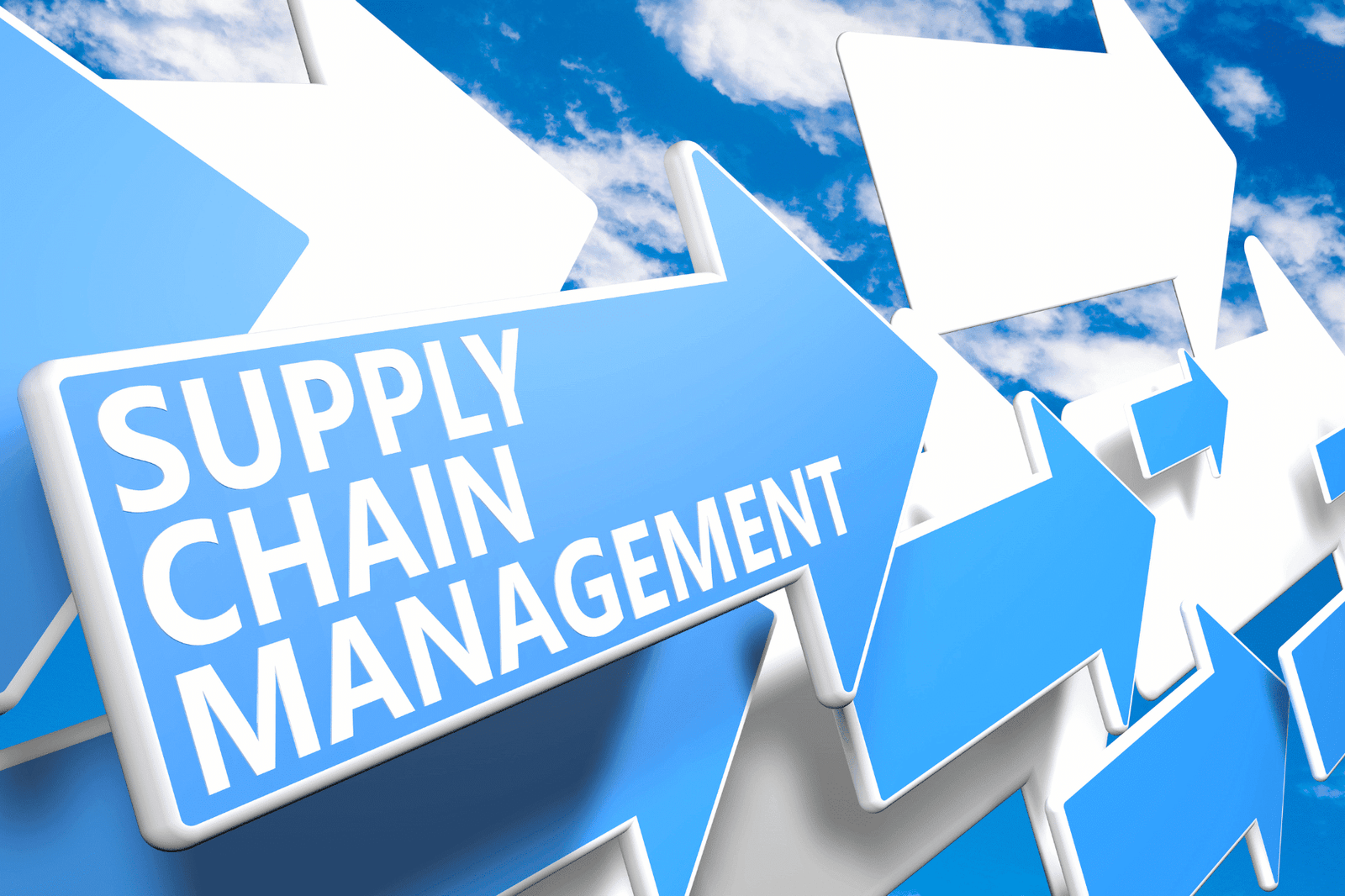Circular supply chains are a sustainable way of doing business. They reduce waste and pollution, while also increasing profits and productivity.
In this blog, we’ll look at how circular supply chains work, why they’re important for sustainability, and how you can get started with your own circular supply chain initiatives.
- What is a Circular Supply Chain?
- The Shift from Linear to Circular Supply Chains
- Key Components of Circular Supply Chains
- The Role of Technology in Circular Supply Chains
- Examples of Circular Supply Chain Success Stories
- Challenges and Barriers in Transitioning to a Circular Supply Chain
- Strategies for Implementing Circular Supply Chain Practices
- Metrics and Indicators for Measuring Circular Supply Chain Success
- The Future of Circular Supply Chains
- Increasing Consumer Awareness
- Wrapping Up
What is a Circular Supply Chain?
A circular supply chain is a system that aims to reduce waste and increase efficiency by reusing materials, products and resources. In contrast to linear supply chains, which are designed for single use or rapid disposal after use (think plastic bottles), circular supply chains are built around the idea of sustainability and longevity.
The Shift from Linear to Circular Supply Chains
As someone who has personally experienced the benefits of circular supply chains, I can attest to the importance of transitioning from the traditional linear model to a more sustainable and eco-friendly approach. Let’s dive deeper into the differences between these two models and why it’s crucial for businesses to make the change.
Understanding the Traditional Linear Supply Chain Model
The traditional linear supply chain model follows a simple path: raw materials are extracted, products are manufactured, distributed, and eventually consumed. After their use, these products are discarded as waste. This “take-make-waste” approach has been the norm for decades, but it’s becoming increasingly clear that it’s not sustainable in the long run. The linear model leads to resource depletion, pollution, and significant amounts of waste that harm our planet and its ecosystems.
Why Transitioning to a Circular Supply Chain is Important
The circular supply chain model, on the other hand, aims to minimize waste and make the most of our limited resources. By reusing, refurbishing, recycling, and repurposing products and materials, we can reduce the demand for new raw materials, decrease energy consumption, and limit the amount of waste that ends up in landfills or pollutes our environment.
Here are some key reasons why businesses should consider transitioning to a circular supply chain:
Environmental benefits
Reducing waste and pollution is essential for preserving our planet and its resources for future generations. Circular supply chains help to minimize the environmental impact of our consumption and production patterns.
Cost savings
By reusing materials and products, businesses can cut costs on raw materials and waste disposal, while also benefiting from reduced energy consumption in manufacturing processes.
Increased efficiency
Circular supply chains promote more efficient use of resources, which can lead to improved productivity and overall performance in the long run.
Competitive advantage
Businesses that embrace circular supply chain practices can differentiate themselves from competitors and attract environmentally conscious customers, investors, and partners.
Regulatory compliance
Governments around the world are implementing stricter environmental regulations. Adopting circular supply chain practices can help businesses stay ahead of the curve and avoid potential fines or penalties.
By making the shift from linear to circular supply chains, businesses can realize significant benefits in terms of sustainability, cost savings, efficiency, and competitive advantage. It’s a win-win situation for both companies and the environment, and as someone who has implemented circular supply chain practices, I can attest to the positive impact it can have on a business’s bottom line and reputation.

Key Components of Circular Supply Chains
Circular supply chains are built upon several key components that work together to reduce waste and increase resource efficiency. Here are some of the most important components of circular supply chains:
Closed-Loop Systems
Closed-loop systems are at the heart of circular supply chains. These systems are designed to keep materials and products within the supply chain network, rather than discarding them as waste. In a closed-loop system, waste is minimized by using resources more efficiently and recovering materials and products at the end of their life cycle. These materials can then be repurposed, recycled, or used to create new products, closing the loop and reducing the need for new raw materials.
Reverse Logistics
Reverse logistics is the process of managing and recovering products that have reached the end of their useful life. This involves collecting, refurbishing, repairing, or recycling products, and returning them to the supply chain to be used again. By keeping products in use for longer, reverse logistics helps to reduce waste and increase resource efficiency.
Reuse, Recycling, and Upcycling
Reuse, recycling, and upcycling are all important components of circular supply chains. Reuse involves using a product more than once before discarding it, while recycling involves breaking down materials to create new products. Upcycling involves taking waste materials and transforming them into products of higher value. These methods help to reduce waste, conserve resources, and minimize the environmental impact of production and consumption.
Resource Optimization
Resource optimization involves using resources more efficiently and minimizing waste. This can include using renewable energy sources, reducing energy consumption, and maximizing the use of raw materials. By optimizing resources, businesses can reduce costs, improve efficiency, and reduce their environmental impact.
By incorporating these key components into their supply chain management strategy, businesses can move towards a more sustainable and circular approach to production and consumption. This not only benefits the environment, but can also lead to cost savings, increased efficiency, and improved competitiveness in the marketplace.
The Role of Technology in Circular Supply Chains
Technology plays a significant role in enabling circular supply chains, and supporting businesses in their efforts to minimize waste, optimize resources, and implement sustainable practices. Here are some key technologies that are driving the transition toward circular supply chains:
Internet of Things (IoT)
The Internet of Things (IoT) refers to the network of interconnected devices that can collect and exchange data. In the context of circular supply chains, IoT devices can be used to monitor the lifecycle of products, track inventory levels, and optimize resource usage. This data can help businesses identify inefficiencies in their supply chain and make more informed decisions about resource allocation, waste reduction, and overall sustainability.
Artificial Intelligence (AI)
Artificial Intelligence (AI) can be used to analyze large volumes of data and identify patterns that might not be apparent to the human eye. AI can support circular supply chains by analyzing data from IoT devices, predicting maintenance needs, and optimizing resource usage. For example, AI algorithms can help businesses determine the most efficient way to refurbish or recycle products, reducing waste and conserving resources.
Blockchain
Blockchain technology has the potential to revolutionize supply chain management by providing a secure and transparent way to track products and materials throughout their lifecycle. In a circular supply chain, blockchain can help ensure that materials and products are properly recycled or reused, and that waste is minimized. This level of visibility and traceability can also help businesses comply with regulatory requirements and demonstrate their commitment to sustainability.
Advanced Analytics
Advanced analytics can help businesses make data-driven decisions about their supply chain management, improving efficiency and reducing waste. By analyzing data from IoT devices, AI algorithms, and other sources, businesses can gain insights into their supply chain performance and identify areas where improvements can be made. This can help drive more sustainable practices and support the transition toward a circular supply chain.
Technology plays a crucial role in enabling circular supply chains, providing businesses with the tools they need to optimize resources, reduce waste, and improve overall sustainability. By embracing these technologies, businesses can make significant progress toward a more sustainable and circular model of production and consumption.
Examples of Circular Supply Chain Success Stories
Many businesses have already embraced circular supply chain practices, and their efforts are paying off in terms of sustainability, cost savings, and efficiency. Here are a few examples of circular supply chain success stories:
Dell
Dell has implemented a closed-loop supply chain model in which it recovers and reuses materials from end-of-life products. The company uses recycled plastic from old computers to create new ones and has recycled over 100 million pounds of e-waste since 2012. Dell’s circular supply chain practices have helped it reduce waste, conserve resources, and save money on raw materials.
H&M
H&M has implemented a garment collection program in which customers can bring in old clothing to be recycled or repurposed. The company has also introduced a line of clothing made from recycled materials, including polyester and cotton. H&M’s circular supply chain practices have helped it reduce waste and improve its reputation as a sustainable fashion brand.
Interface
Interface, a carpet tile manufacturer, has implemented a closed-loop supply chain model in which it recovers and reuses materials from end-of-life products. The company uses recycled materials to create new products and has reduced its waste in landfill by 91% since 1996. Interface’s circular supply chain practices have helped it reduce costs, improve efficiency, and reduce its environmental impact.
Renault
Renault has implemented a circular economy strategy in which it recycles and repurposes materials from end-of-life vehicles. The company uses recycled materials to create new cars and has reduced its waste to landfill by 80% since 2000. Renault’s circular supply chain practices have helped it reduce costs, improve efficiency, and reduce its environmental impact.
These are just a few examples of businesses that have successfully implemented circular supply chain practices. By embracing a more sustainable and circular approach to production and consumption, these businesses have realized significant benefits in terms of cost savings, efficiency, and environmental impact. As more businesses adopt circular supply chain practices, we can expect to see a significant shift towards a more sustainable and eco-friendly economy.
Challenges and Barriers in Transitioning to a Circular Supply Chain
While adopting circular supply chain practices offers numerous benefits, businesses may encounter challenges and barriers during the transition. Understanding these potential obstacles can help organizations develop strategies to overcome them and successfully implement a circular supply chain.
Resistance to Change
Change can be difficult, and there may be resistance from employees, suppliers, or stakeholders who are accustomed to traditional linear supply chain practices. To address this issue:
- Communicate the benefits: Clearly explain the advantages of adopting a circular supply chain, such as cost savings, improved sustainability, and enhanced brand reputation.
- Provide training and support: Offer education and training to help employees understand and adapt to new processes and practices.
- Engage stakeholders: Involve all relevant stakeholders in the transition process, encouraging their input and collaboration.
High Initial Investment Costs
Transitioning to a circular supply chain can require substantial upfront investments in new technologies, equipment, and infrastructure. To mitigate this challenge:
- Develop a phased approach: Prioritize and implement changes gradually, allowing for more manageable investments over time.
- Seek external funding: Explore opportunities for grants, subsidies, or partnerships that can help finance the transition.
- Calculate long-term savings: Consider the long-term cost savings and return on investment that circular supply chain practices can generate, justifying the initial expenditure.
Difficulties in Measuring Circularity
Measuring the success of circular supply chain practices can be complex, as traditional metrics may not accurately capture the extent of circularity. To overcome this issue:
- Identify appropriate metrics: Develop new performance indicators that specifically measure circularity, such as waste reduction, resource efficiency, or product life extension.
- Establish a baseline: Determine current performance levels to enable accurate comparison and assessment of progress.
- Utilize technology: Implement data collection and analysis tools to accurately track and measure circular supply chain performance.
Regulatory and Policy Hurdles
Businesses may face regulatory and policy barriers when transitioning to a circular supply chain, as some existing regulations may not fully support or accommodate circular practices. To address this challenge:
- Stay informed: Keep up to date with relevant regulations and policies, identifying any potential barriers to circular supply chain implementation.
- Engage in dialogue: Communicate with policymakers and regulators to raise awareness of circular supply chain practices and advocate for supportive measures.
- Collaborate with industry peers: Join forces with other businesses in the same industry to promote the adoption of circular supply chain practices and influence policy changes.
By acknowledging and addressing these challenges and barriers, businesses can develop effective strategies to overcome obstacles and successfully transition to a circular supply chain.
Strategies for Implementing Circular Supply Chain Practices
Adopting circular supply chain practices can significantly benefit businesses by improving sustainability, reducing costs, and enhancing brand reputation. Here are some actionable strategies that organizations can implement to transition towards a more circular supply chain:
Rethinking Product Design
A crucial aspect of implementing a circular supply chain is re-evaluating the design of products to ensure they are created with sustainability and resource efficiency in mind. Businesses should consider the following factors:
- Design for durability: Create products that are long-lasting and resistant to wear and tear.
- Design for repairability: Ensure products can be easily repaired, enabling longer use and reducing waste.
- Design for disassembly: Create products that can be easily taken apart, allowing components to be reused or recycled.
- Use of sustainable materials: Incorporate eco-friendly materials, such as recycled or biodegradable components, into product designs.
Fostering Collaboration with Suppliers
Collaboration with suppliers is essential for a successful circular supply chain. Businesses should adopt the following strategies to foster collaboration:
- Establish strong communication channels: Open, transparent communication with suppliers is vital for sharing information, discussing challenges, and identifying opportunities for improvement.
- Set common goals and objectives: Collaborate with suppliers to establish mutual sustainability goals and objectives, ensuring both parties are working towards a common purpose.
- Conduct regular evaluations: Assess suppliers’ performance in terms of sustainability and resource efficiency, providing feedback and guidance for improvement when necessary.
- Encourage innovation: Promote a culture of innovation among suppliers, encouraging them to develop new processes or technologies that contribute to a more circular supply chain.
Promoting a Culture of Sustainability within the Organization
To successfully implement circular supply chain practices, it is essential to foster a culture of sustainability within the organization. Here are some steps businesses can take to promote such a culture:
- Leadership commitment: Top management should demonstrate their commitment to sustainability by setting clear goals, allocating resources, and leading by example.
- Employee engagement: Encourage employees to participate in sustainability initiatives, providing opportunities for them to contribute ideas and feedback.
- Education and training: Provide regular training and education on sustainability and circular supply chain practices, ensuring employees are well-informed and equipped to make eco-friendly decisions.
- Recognize and reward: Acknowledge employees’ efforts and achievements in promoting sustainability, offering incentives or rewards for outstanding contributions.
By implementing these strategies, businesses can successfully transition to a circular supply chain, reaping the benefits of improved sustainability, cost savings, and enhanced brand reputation.
Metrics and Indicators for Measuring Circular Supply Chain Success
To effectively assess the success of circular supply chain practices, businesses need to utilize relevant key performance indicators (KPIs) and metrics. These indicators provide valuable insights into the efficiency and sustainability of a company’s supply chain operations. Here are some important KPIs and metrics to consider when evaluating the success of circular supply chain practices:
Waste Reduction
One of the primary goals of a circular supply chain is to minimize waste generated throughout the production and consumption process. Waste reduction metrics can help businesses evaluate their progress in achieving this goal. Some useful waste reduction KPIs include:
- Total waste generated: Measure the total amount of waste produced within a given time frame, comparing it to previous periods to identify trends and improvements.
- Waste diversion rate: Calculate the percentage of waste diverted from landfills through recycling, composting, or reuse initiatives.
- Waste intensity: Assess the amount of waste generated per unit of production, enabling a comparison of waste efficiency across different products or processes.
Resource Efficiency
Resource efficiency is another critical aspect of circular supply chain practices. By using resources more efficiently, businesses can reduce costs, minimize environmental impacts, and improve overall sustainability. Key resource efficiency metrics include:
- Material efficiency: Determine the percentage of materials utilized in the production process, identifying opportunities to reduce waste or use materials more effectively.
- Energy efficiency: Measure the amount of energy consumed per unit of production, identifying areas for improvement and potential energy-saving initiatives.
- Water efficiency: Assess the amount of water used per unit of production, identifying opportunities to conserve water and reduce overall consumption.
Product Life Extension
Extending the life of products is a central component of a circular supply chain. By designing products to last longer and be more easily repaired, businesses can reduce waste and promote a more sustainable model of consumption. Metrics related to product life extension include:
- Average product lifespan: Calculate the average duration of product use before it reaches the end of its life, comparing this figure to industry benchmarks or historical data.
- Repairability index: Assess the ease and feasibility of repairing products, considering factors such as the availability of replacement parts, repair documentation, and overall product design.
- Rate of product obsolescence: Measure the percentage of products that become obsolete within a given time frame, identifying trends and areas for improvement in product design and durability.
Customer Satisfaction
Customer satisfaction is a critical indicator of the success of circular supply chain practices. By meeting the growing demand for sustainable products and services, businesses can attract and retain environmentally conscious customers. Some customer satisfaction metrics to consider include:
- Customer feedback and reviews: Collect and analyze customer feedback related to sustainability and circular supply chain practices, identifying areas for improvement and positive trends.
- Sustainability-focused Net Promoter Score (NPS): Measure customer loyalty and satisfaction specifically related to a company’s sustainability efforts, comparing this figure to overall NPS.
- Customer retention rate: Calculate the percentage of customers who continue to purchase sustainable products or services, indicating the success of circular supply chain practices in meeting customer expectations.
By tracking and analyzing these key performance indicators and metrics, businesses can effectively measure the success of their circular supply chain practices and continuously improve their sustainability efforts.
The Future of Circular Supply Chains
The future of circular supply chains is bright, with increasing numbers of businesses recognizing the benefits of sustainable and circular practices. Here are a few trends that are shaping the future of circular supply chains:
Collaboration and Partnerships
Collaboration and partnerships are becoming increasingly important in driving circular supply chain practices. Businesses are working together to share resources, optimize supply chains, and develop new circular business models. By working together, businesses can achieve greater efficiency and sustainability than they could on their own.
Consumer Awareness
Consumer awareness of environmental issues is growing, and consumers are increasingly interested in buying products from businesses that prioritize sustainability. This is driving businesses to adopt circular supply chain practices as a way to meet consumer demand for eco-friendly products.
Policy and Regulation
Governments around the world are introducing policies and regulations to encourage businesses to adopt circular supply chain practices. For example, the European Union has introduced legislation to promote a circular economy, and China has introduced a ban on certain types of waste imports. These policy and regulatory changes are driving businesses to adopt more sustainable and circular practices.
Technology and Innovation
Advancements in technology and innovation are driving the development of new circular supply chain practices. For example, new technologies such as blockchain and AI are enabling businesses to track and optimize their supply chains in real time, while innovations in recycling and upcycling are creating new opportunities for businesses to reduce waste and conserve resources.
The future of circular supply chains is bright, with businesses and governments around the world recognizing the benefits of sustainable and circular practices. By embracing collaboration, consumer awareness, policy and regulation, and technology and innovation, businesses can create more efficient, sustainable, and eco-friendly supply chains. By working together, we can create a more sustainable and circular economy for future generations.
Increasing Consumer Awareness
Consumer awareness of environmental issues is growing, and businesses should prioritize sustainability to meet consumer demand for eco-friendly products. One of the key benefits of adopting circular supply chain practices is the ability to demonstrate your commitment to sustainability and attract environmentally conscious consumers.
Here are some ways that businesses can increase consumer awareness and promote their circular supply chain practices:
Marketing and Advertising
Marketing and advertising are powerful tools for promoting the benefits of circular supply chain practices. Businesses can highlight their sustainability efforts in their marketing materials and use messaging that resonates with environmentally conscious consumers. For example, a company that uses recycled materials in its products could use messaging such as “made from 100% recycled materials” or “helping to reduce waste and protect the environment.”
Labeling and Certification
Certifications and labels can be used to indicate that a product or company meets certain sustainability standards. For example, the Forest Stewardship Council (FSC) certification is used to indicate that a product is made from sustainably sourced wood. Similarly, the Cradle to Cradle certification is used to indicate that a product has been designed for sustainability and can be reused or recycled at the end of its life.
Education and Outreach
Educating consumers about the benefits of circular supply chain practices can help raise awareness and build support for sustainability efforts. Businesses can use social media, email newsletters, and other outreach channels to share information about their sustainability efforts and engage with consumers. For example, a company that uses recycled materials in its products could share information about the benefits of recycling and how consumers can recycle their products at the end of their life.
Partnerships and Collaborations
Partnerships and collaborations with other businesses and organizations can help amplify the message about circular supply chain practices. For example, a clothing company that uses recycled materials in its products could partner with a recycling organization to promote the benefits of recycling and encourage consumers to recycle their clothing at the end of its life.
By increasing consumer awareness and promoting circular supply chain practices, businesses can attract environmentally conscious consumers and build a reputation for sustainability.
Wrapping Up
Circular supply chains offer a sustainable and eco-friendly alternative to traditional linear supply chains. By implementing circular supply chain practices, businesses can reduce waste, conserve resources, and improve efficiency, all while promoting a more sustainable and circular economy.
Technology plays a critical role in enabling circular supply chains, providing businesses with the tools they need to optimize resources, reduce waste, and improve sustainability. IoT, AI, blockchain, and advanced analytics are just a few examples of the technologies that are driving the transition toward circular supply chains.
While many businesses have already embraced circular supply chain practices, there is still much work to be done. Collaboration, consumer awareness, policy and regulation, and technology and innovation are all critical factors in driving the transition toward more sustainable and circular supply chains.
As we look toward the future, it is clear that circular supply chains will play an increasingly important role in creating a more sustainable and eco-friendly economy. By working together and embracing these new practices and technologies, businesses and governments can create a more sustainable and prosperous future for all.










